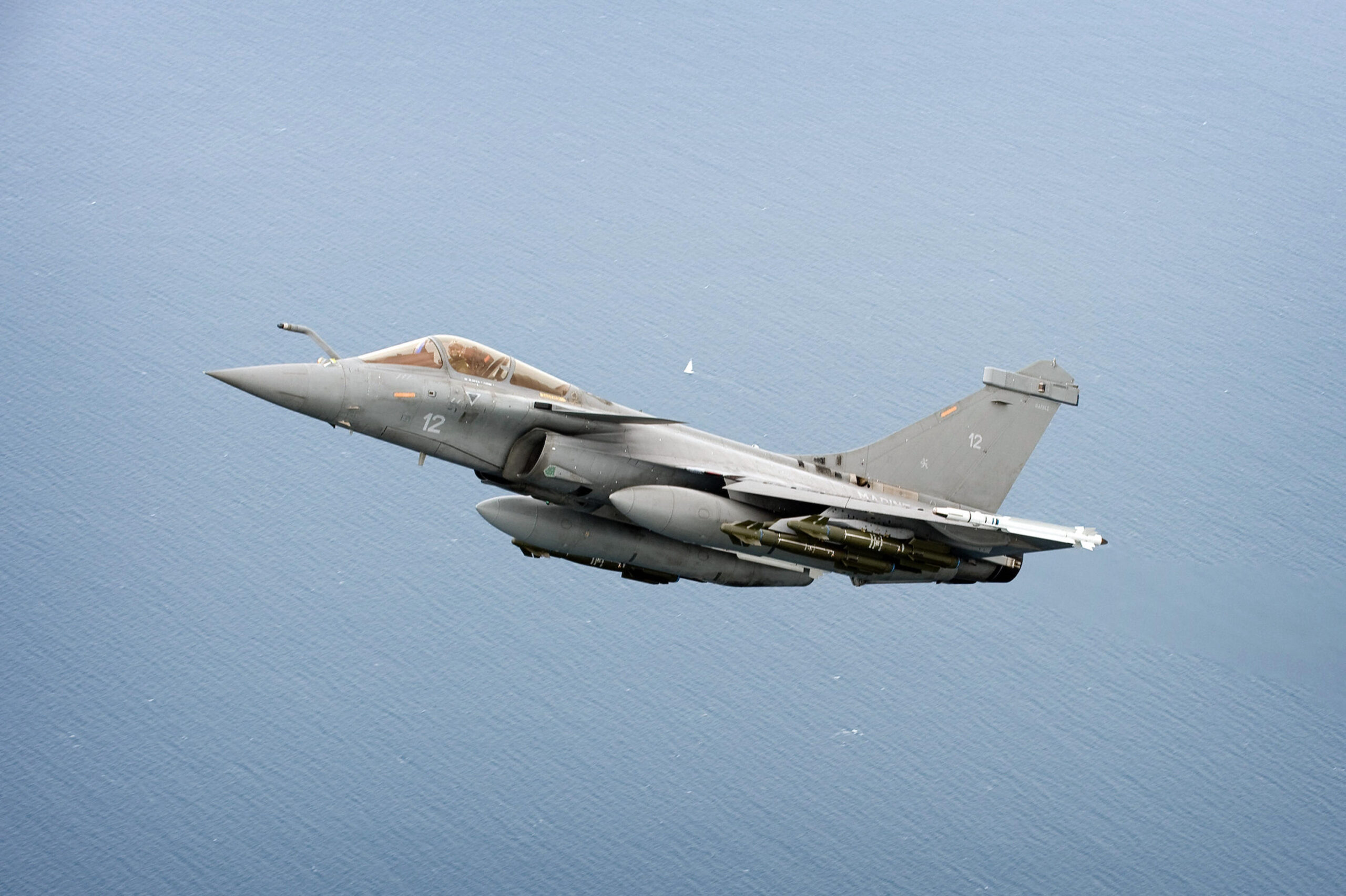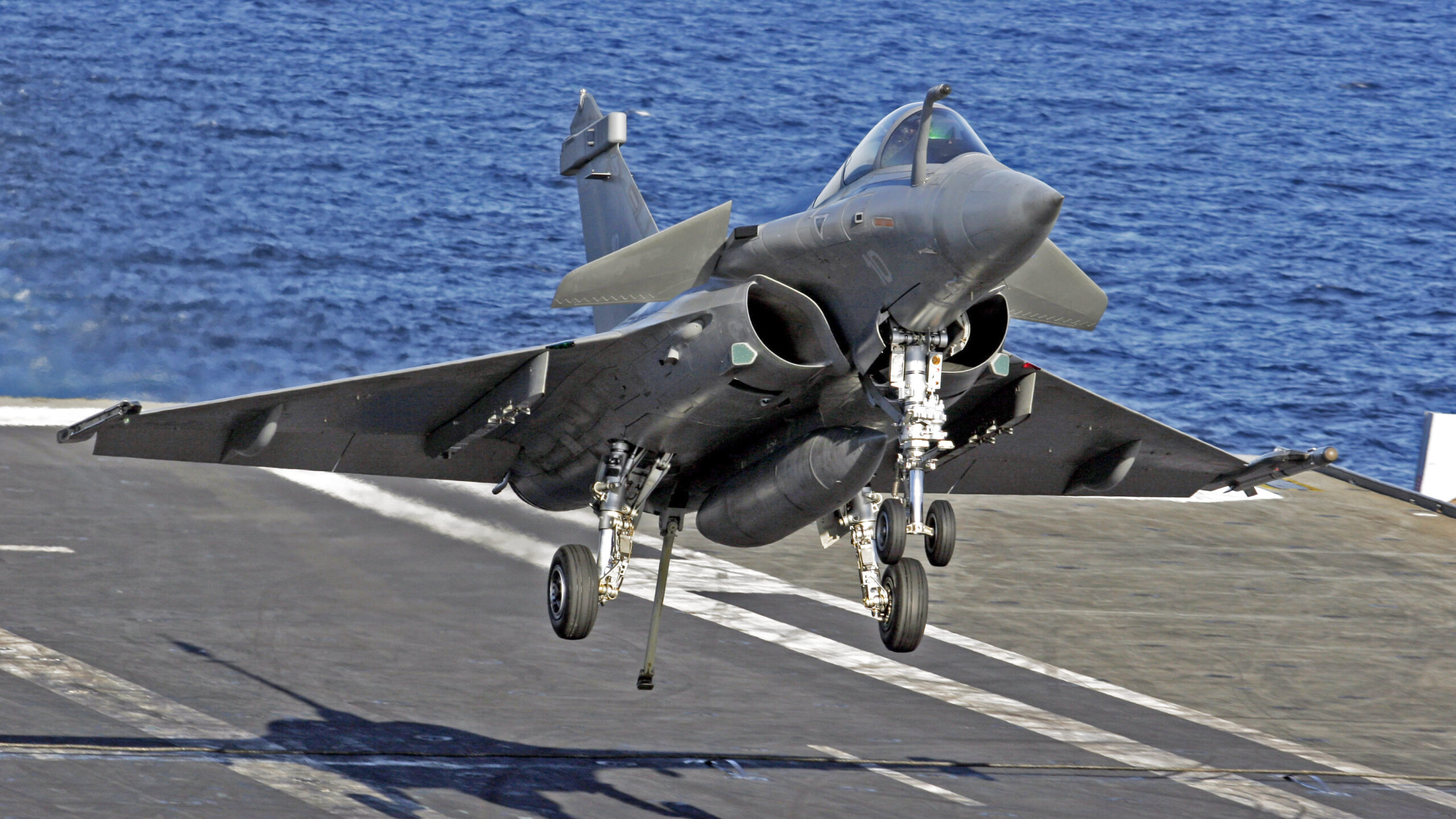The French-made Rafale M from Dassault Aviation is set to be the Indian Navy’s next-generation carrier fighter after New Delhi gave the initial go-ahead to purchase 26 of the jets. The navalized Rafale M — the land-based is already flown by the Indian Air Force — fought off competition from Boeing’s F/A-18E/F Super Hornet and is planned to be acquired as part of a major French arms package that will also include three Scorpène class diesel-electric attack submarines.
It was announced today that the Indian Ministry of Defense’s Defense Acquisition Council, which is in charge of procurement, had given initial approval for the purchase of the Rafale Ms and the three submarines. That announcement came just ahead of a planned visit to France by Indian Prime Minister Narendra Modi.

More specifically, the French arms deal will include four two-seat Rafales, which will be used for training. Presently there is no two-seat version of the navalized Rafale M, so it’s not clear if these four aircraft will be a new, India-specific model or if they will be land-based two-seaters, as used by the Indian Air Force and others.
Meanwhile, the three Scorpène class submarines will be built jointly by India’s Mazagon Dock Shipbuilders and France’s Naval Group, according to Reuters. The Indian Navy previously bought six Scorpène submarines from France, at a cost of $2.29 billion, with the last set to be commissioned next year.
A source told Reuters that the combined deal will be worth around $9.75 billion, although the Indian government has declined to comment on that.
However, in a tweet, Indian Minister of Defense Rajnath Singh that the “price and other terms of purchase will be negotiated with the French government after taking into account all relevant aspects, including comparative procurement price of similar aircraft by other countries.”
Modri’s presidential visit to Paris is being seen as a sign of increasingly close strategic cooperation between India and France, including in the military realm. As a symbol of this, the Indian Air Force will take part in the flyover of the French capital tomorrow, which marks Bastille Day, the national day of France.
Aside from this, the choice of the Rafale M was not entirely surprising.
Not only has the Rafale already in service with the Indian Air Force in its land-based configuration, but it has also racked up an impressive list of export successes, including a huge order, also for the land-based version, from the United Arab Emirates.
On the other hand, Boeing will likely be disappointed not to build on its previous sales to India of other high-end defense technology, including AH-64E Apache attack helicopters and P-8I maritime patrol aircraft. That said, any momentum behind the Super Hornet offer seems to have been lost some weeks ago, with the U.S. reportedly having lapsed at the end of June, leaving the Rafale M as the only contender.
The fly-off between the Rafale M and the Super Hornet included a series of tests at Indian Naval Station (INS) Hansa in the southwestern state of Goa, which includes the Shore Based Test Facility (SBTF), with a ‘ski jump’ ramp replicating that found on Indian Navy carriers.
Ultimately, the Rafale M will provide a deck-launched fighter for the latest Indian Navy carrier, INS Vikrant, also known as Indigenous Aircraft Carrier 1 (IAC-1), which first went to sea in August 2021, after lengthy delays.

This carrier is configured for the short take-off but arrested recovery, or STOBAR concept of operations, while both the Rafale M and Super Hornet were developed for use with catapult launch gear.
As far as INS Vikrant is concerned, though, there have been questions about the suitability of the carrier to operate either the Rafale or the Super Hornet. As currently configured, the carrier’s elevators, installed on either end of the superstructure, are fairly small. In fact, as we have discussed before, they appear to be scaled to the Russian-made MiG-29K/KUB Fulcrum fighter jet that’s currently in Indian Navy service, aboard the carrier Vikramaditya, which was formerly the Russian Navy’s Admiral Gorshkov.
At this point, it’s unclear what kinds of modifications might be required to handle the larger Rafale. It’s noteworthy, however, that the French jet is somewhat bigger, with a wingspan of 35 feet 9 inches. The Super Hornet, which differs in having folding wings, spans 30 feet 6 inches when folded. The elevator on the carrier is 32 feet 10 inches wide.
These kinds of problems should be absent from the next homegrown Indian Navy carrier, INS Vishal, or IAC-2, which is planned to be significantly bigger, at around 65,000 tons, compared to 40,000 tons for the Vikrant. This new warship is expected to draw upon American and British design contributions and could feature an Electromagnetic Aircraft Launch System (EMALS) instead of the ski jump after the United States approved the transfer to India of related technology. IAC-2 will surely be scaled from the outset to handle fighters larger than the MiG-29K. Clearly, the Rafale M is already capable of operating from a catapult-assisted takeoff but arrested recovery (CATOBAR) carrier if India does take this approach for IAC-2.

It’s worth bearing in mind, however, that these Indian carrier aviation developments are still being dwarfed in size and scope by regional rival China.
There have been very many rapid Chinese developments in the field of carrier aviation. Not only does Beijing have two in-service carriers, one of them home-built, plus a new indigenous design taking shape that is expected to feature EMALS rather than a ski jump ramp. Rumors abound that China’s fourth carrier could be even bigger than its predecessors, perhaps with nuclear propulsion. At the same time, China has an indigenous carrier-based stealth fighter under test, plus a fixed-wing carrier-based airborne early warning aircraft, and other developments, including carrier-capable drones.

An order for 26 Rafales is good news for the Indian Navy, and the country in general, for which its carrier aviation prowess is a point of considerable pride.
A follow-on order for more Rafales is likely, too, with the Multi-Role Carrier Borne Fighter (MRCBF) competition that was won by the French fighter originally calling for 57 jets.
New Delhi has already rejected the HAL Naval Light Combat Aircraft (LCA), a carrier-capable version of the Indian Air Force’s Tejas, that could have potentially challenged the Rafale M for future orders.
Meanwhile, India is hopeful that a twin-engine development of the LCA could eventually mature as an indigenous naval fighter, or Twin-Engine Carrier-Based Deck Fighter (TEBDF), but such a prospect remains many years away. Even the most optimistic predictions suggest service entry in the early 2030s.
With that in mind, prospects for the Rafale M in India look very good.
Update, July 14: An article in the Indian newspaper The Hindu confirms that the four trainers included in the 26-aircraft Rafale deal will be land-based versions, rather than a new carrier-capable two-seat variant. Previously, the Hindustan Times had suggested that the Indian Navy may try and lease “four to five” Rafales from France in advance, to allow crews to become familiar with operations from the land base of INS Hansa, including launch and recovery, while the INS Vikrant underwent the required adaptations. It seems the four aircraft will fulfill a similar role, but will be bought rather than leased.
The Indian Air Force already operates land-based single-seat and two-seat versions of the Rafale. The service received 28 single-seater Rafale EH versions and eight two-seater Rafale DH models.
Contact the author: thomas@thedrive.com
